Hydrangeas are the perfect summer flowering plant for your garden. The proliferous flowers look great in the garden and when cut, make a great centerpiece for your summer table. The popularity of the plant has led to many questions from customers about what Hydrangea require – from sunlight and water to pruning and soil. So let’s start with the different types of hydrangea:
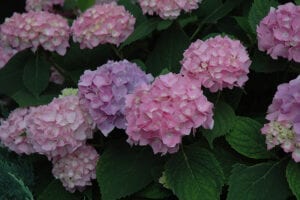 Most of us are familiar with the traditional big leaf hydrangea, known as Hydrangea macrophylla. These are perhaps the most commonly grown hydrangea in the home garden. Big leaf hydrangea can be either mopheads or lacecaps and includes familiar varieties such as ‘Endless Summer,’ Nikko Blue,’ ‘Pink Lacecap’ and many more. Since they produce flowers on the previous season’s growth, pruning hard typically results in no flowers. Selectively prune in early spring just before bud break.
Most of us are familiar with the traditional big leaf hydrangea, known as Hydrangea macrophylla. These are perhaps the most commonly grown hydrangea in the home garden. Big leaf hydrangea can be either mopheads or lacecaps and includes familiar varieties such as ‘Endless Summer,’ Nikko Blue,’ ‘Pink Lacecap’ and many more. Since they produce flowers on the previous season’s growth, pruning hard typically results in no flowers. Selectively prune in early spring just before bud break.*Hydrangea macrophylla are the only type of hydrangeas that you can alter the color of. For BLUE hydrangea add aluminum sulfate. For PINK Hydrangea add lime.
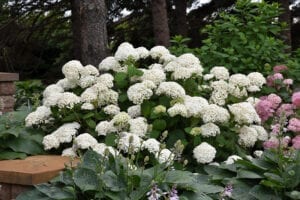 Smooth Leaf Hydrangea (Hydrangea arborescens)
Smooth Leaf Hydrangea (Hydrangea arborescens)
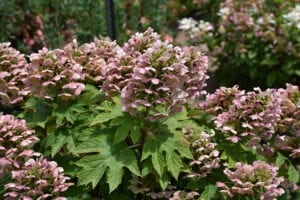 Oakleaf Hydrangea (Hydrangea quercifolia) This hydrangea is well named, as its leaves bear a striking resemblance to oak leaves. The deep green leaves of the oakleaf hydrangea turn shades of deep red in fall before falling off in late fall. The flowers, which are a striking white, are produced on the previous season’s growth. Prune right after flowering (mid-summer) to control size and shape. Only remove up to 1/3 of the plant.
Oakleaf Hydrangea (Hydrangea quercifolia) This hydrangea is well named, as its leaves bear a striking resemblance to oak leaves. The deep green leaves of the oakleaf hydrangea turn shades of deep red in fall before falling off in late fall. The flowers, which are a striking white, are produced on the previous season’s growth. Prune right after flowering (mid-summer) to control size and shape. Only remove up to 1/3 of the plant.
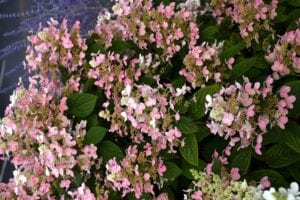 Panicle Hydrangea (Hydrangea paniculata) A large, late blooming species of hydrangea. The flower heads are excellent cut, either fresh or dried. Popular varieties include ‘Grandiflora’ (aka PeeGee) and ‘Tardiva’. Panicle hydrangeas produce flowers on the current season’s growth and respond very well to both hard or light pruning. Prune in late winter/early spring before new growth. Tolerates sun well.
Panicle Hydrangea (Hydrangea paniculata) A large, late blooming species of hydrangea. The flower heads are excellent cut, either fresh or dried. Popular varieties include ‘Grandiflora’ (aka PeeGee) and ‘Tardiva’. Panicle hydrangeas produce flowers on the current season’s growth and respond very well to both hard or light pruning. Prune in late winter/early spring before new growth. Tolerates sun well.
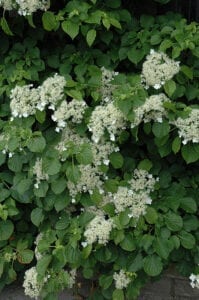
Happy, Healthy Hydrangea Requirements:
MOISTURE: In ideal soil conditions, one inch of water per week in spring and fall and one inch twice a week in summer should be sufficient. AVOID overhead sprinklers! It is best to water the base of the plant to avoid fungus and disease problems. Hydrangeas will signal when they are drought stressed with drooping leaves. Additionally, drooping will occur in extremely warm temperatures (over 85 degrees) regardless of moisture availability.
Add a beautiful hydrangea to your garden and enjoy its classic summer beauty for many years to come!
